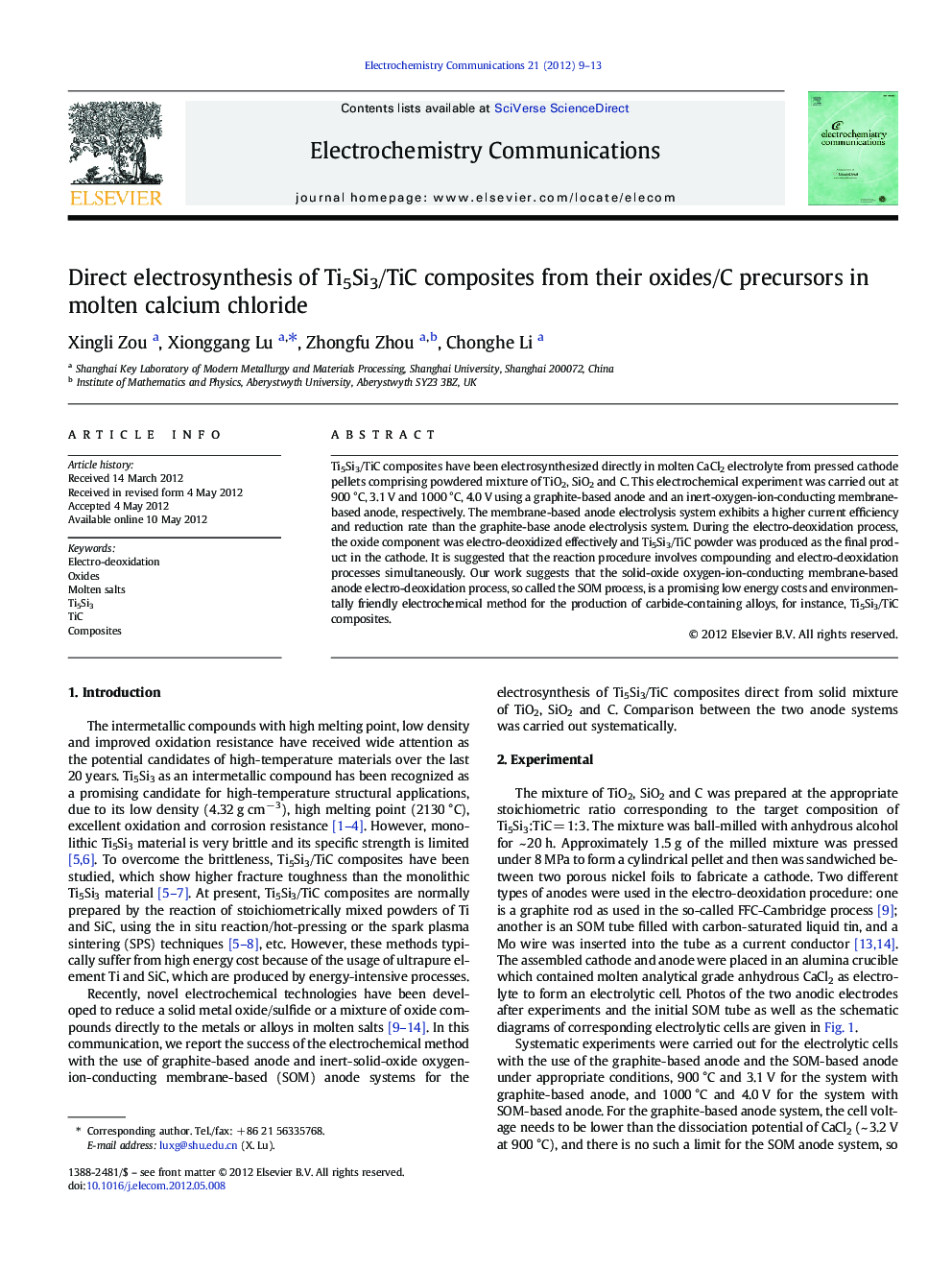| Article ID | Journal | Published Year | Pages | File Type |
|---|---|---|---|---|
| 179437 | Electrochemistry Communications | 2012 | 5 Pages |
Ti5Si3/TiC composites have been electrosynthesized directly in molten CaCl2 electrolyte from pressed cathode pellets comprising powdered mixture of TiO2, SiO2 and C. This electrochemical experiment was carried out at 900 °C, 3.1 V and 1000 °C, 4.0 V using a graphite-based anode and an inert-oxygen-ion-conducting membrane-based anode, respectively. The membrane-based anode electrolysis system exhibits a higher current efficiency and reduction rate than the graphite-base anode electrolysis system. During the electro-deoxidation process, the oxide component was electro-deoxidized effectively and Ti5Si3/TiC powder was produced as the final product in the cathode. It is suggested that the reaction procedure involves compounding and electro-deoxidation processes simultaneously. Our work suggests that the solid-oxide oxygen-ion-conducting membrane-based anode electro-deoxidation process, so called the SOM process, is a promising low energy costs and environmentally friendly electrochemical method for the production of carbide-containing alloys, for instance, Ti5Si3/TiC composites.
► Ti5Si3/TiC composite was directly electrosynthesized from their oxides/C precursors. ► The reaction mechanism of the electro-deoxidation process is proposed. ► Solid oxide oxygen-ion-conducting membrane (SOM) was used as a membrane-based anode. ► The SOM process is a novel method for production of carbide-containing composites.
